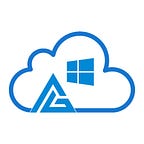For more information and insight, read the article in AzureGuru.org
Cost Management shows the organizational cost and usage patterns with advanced analytics. Reports in Cost Management show the usage-based costs consumed by Azure services and third-party Marketplace offerings. Costs are based on negotiated prices and factor in reservation and Azure Hybrid Benefit discounts. Collectively, the reports show your internal and external costs for usage and Azure Marketplace charges. Other charges, such as reservation purchases, support, and taxes aren’t yet shown in reports. The reports help you understand your spending and resource use and can help find spending anomalies. Predictive analytics are also available. Cost Management uses Azure management groups, budgets, and recommendations to show clearly how your expenses are organized and how you might reduce costs.
Azure Cost Management allows you to see historical breakdowns of what services you are spending your money on.
Factors affecting costs
- Resource Type: Costs are resource-specific, so the usage that a meter tracks and the number of meters associated with a resource depend on the resource type.
- Services: Azure usage rates and billing periods can differ between Enterprise, Web Direct, and Cloud Solution Provider (CSP) customers. Some subscription types also include usage allowances, which affect costs.
- Location: Azure has datacenters all over the world. Usage costs vary between locations that offer particular Azure products, services, and resources based on popularity, demand, and local infrastructure costs.
- Azure billing zones: Bandwidth refers to data moving in and out of Azure datacenters. Most of the time inbound data transfers (data going into Azure data centers) are free. For outbound data transfers (data going out of Azure datacenters), the data transfer pricing is based on Billing Zones.
There are three main customer types on which the available purchasing options for Azure products and services is contingent, including:
- Enterprise. Enterprise customers sign an Enterprise Agreement with Azure that commits them to spend a negotiated amount on Azure services, which they typically pay annually. Enterprise customers also have access to customized Azure pricing.
- Web direct. Web direct customers pay public prices for Azure resources, and their monthly billing and payments occur through the Azure website.
- Cloud Solution Provider. Cloud Solution Provider (CSP) typically is Microsoft partner companies that a customer hires to build solutions on top of Azure. Payment and billing for Azure usage occur through the customer’s CSP.
References:
What is Azure Cost Management + Billing?
